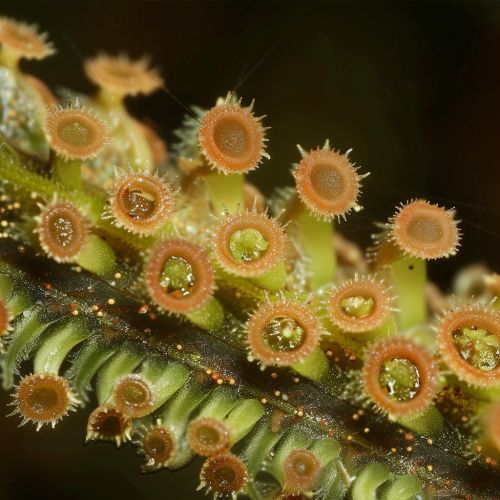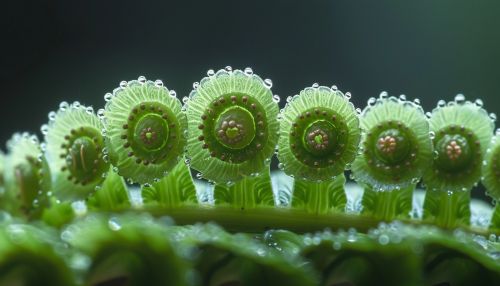Antheridia
Introduction
Antheridia are male sex organs found in many groups of cryptogams, including bryophytes, ferns, and some algae. They produce and release male gametes, which are necessary for sexual reproduction in these organisms. Antheridia are typically small, spherical structures, but their size, shape, and location can vary greatly depending on the species.
Structure and Development
Antheridia develop from antheridial cells, which are a type of differentiated cell. These cells undergo several rounds of cell division to form a multicellular structure. The outer layer of cells forms the protective jacket, while the inner cells develop into sperm-producing cells. The development of antheridia is regulated by a variety of environmental and hormonal cues.


Function
The primary function of antheridia is to produce and release male gametes. These gametes are typically flagellated and are capable of swimming towards the female sex organ, the archegonium, in the presence of water. The process of gamete release is known as dehiscence. Once the gametes reach the archegonium, fertilization occurs, leading to the formation of a zygote and eventually a new organism.
Diversity
Antheridia are found in a wide range of cryptogams, and their structure and function can vary greatly among different groups. For example, in bryophytes and ferns, antheridia are typically located on the underside of the leaves, while in some algae, they are found on specialized structures called antheridiophores. The size and shape of antheridia can also vary, ranging from small, spherical structures to elongated, tube-like structures.
Ecological Significance
Antheridia play a crucial role in the life cycle of many cryptogams, facilitating sexual reproduction and genetic diversity. They also have ecological significance, as the release of gametes can influence the distribution and abundance of these organisms in the environment. In addition, antheridia and the gametes they produce can serve as a food source for various microorganisms and small animals.
